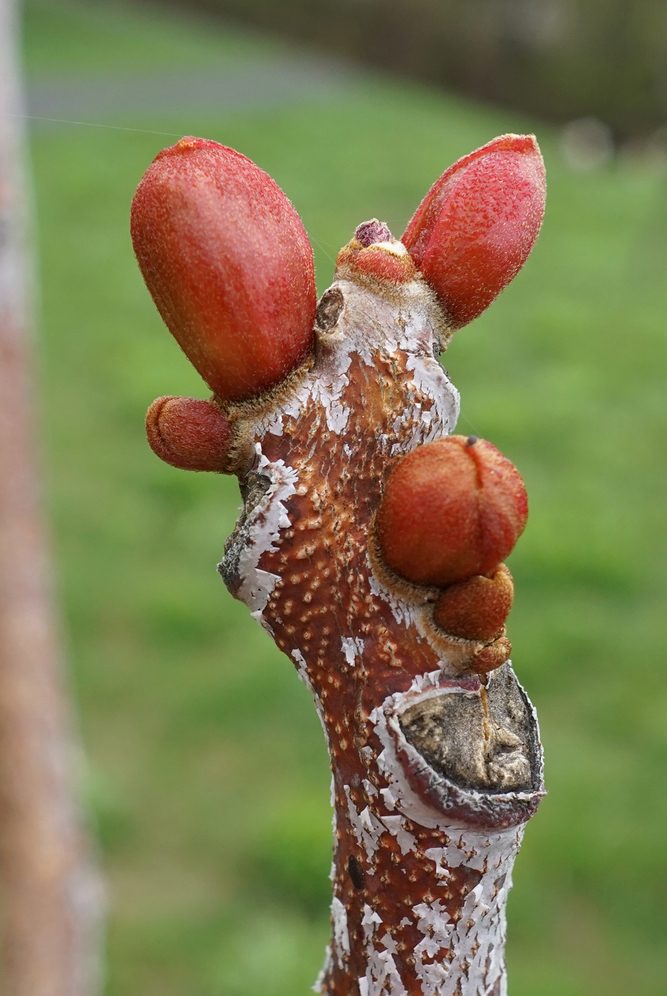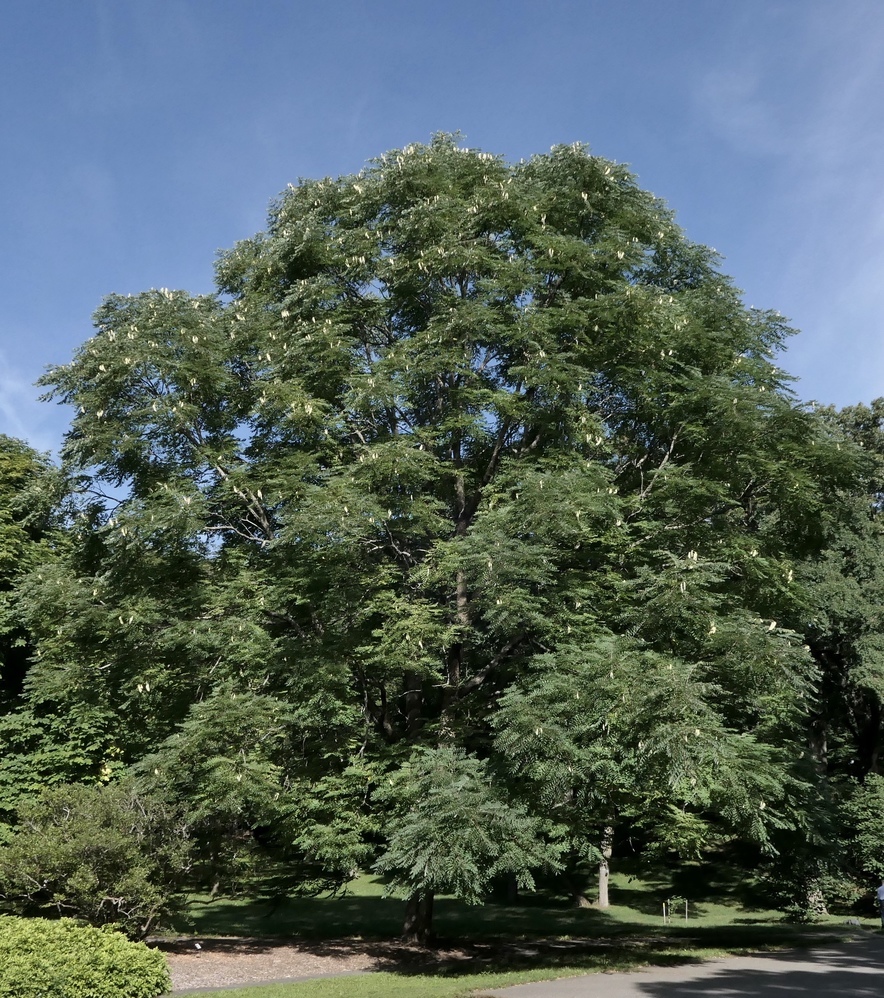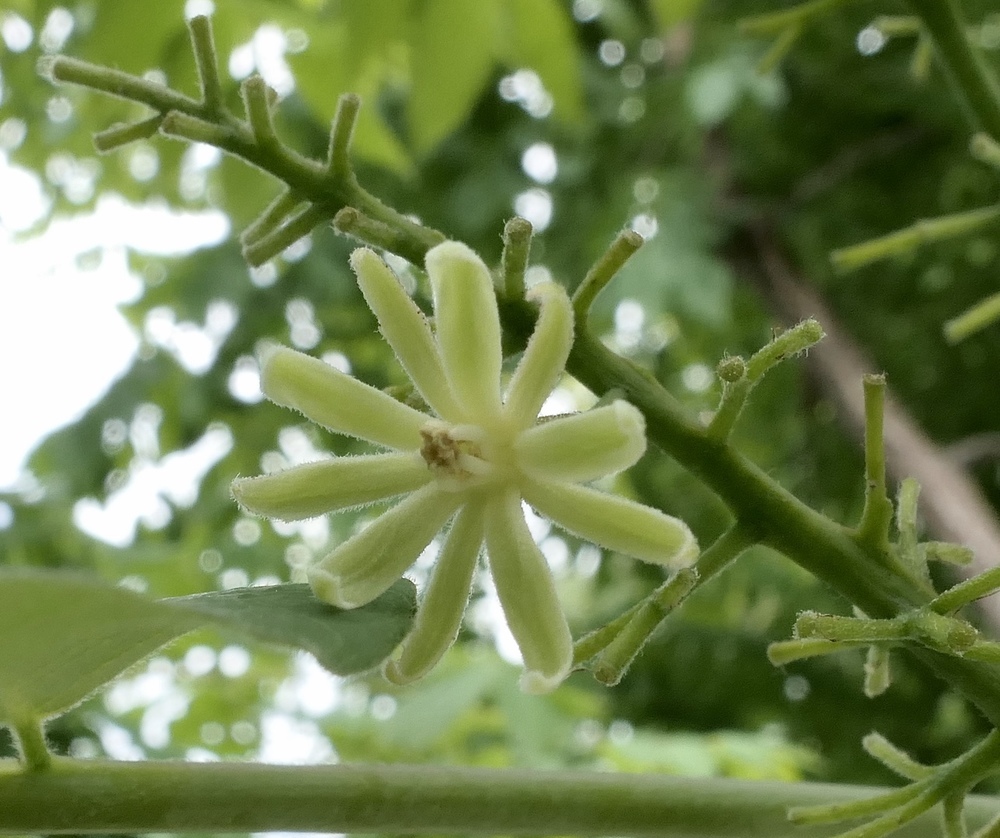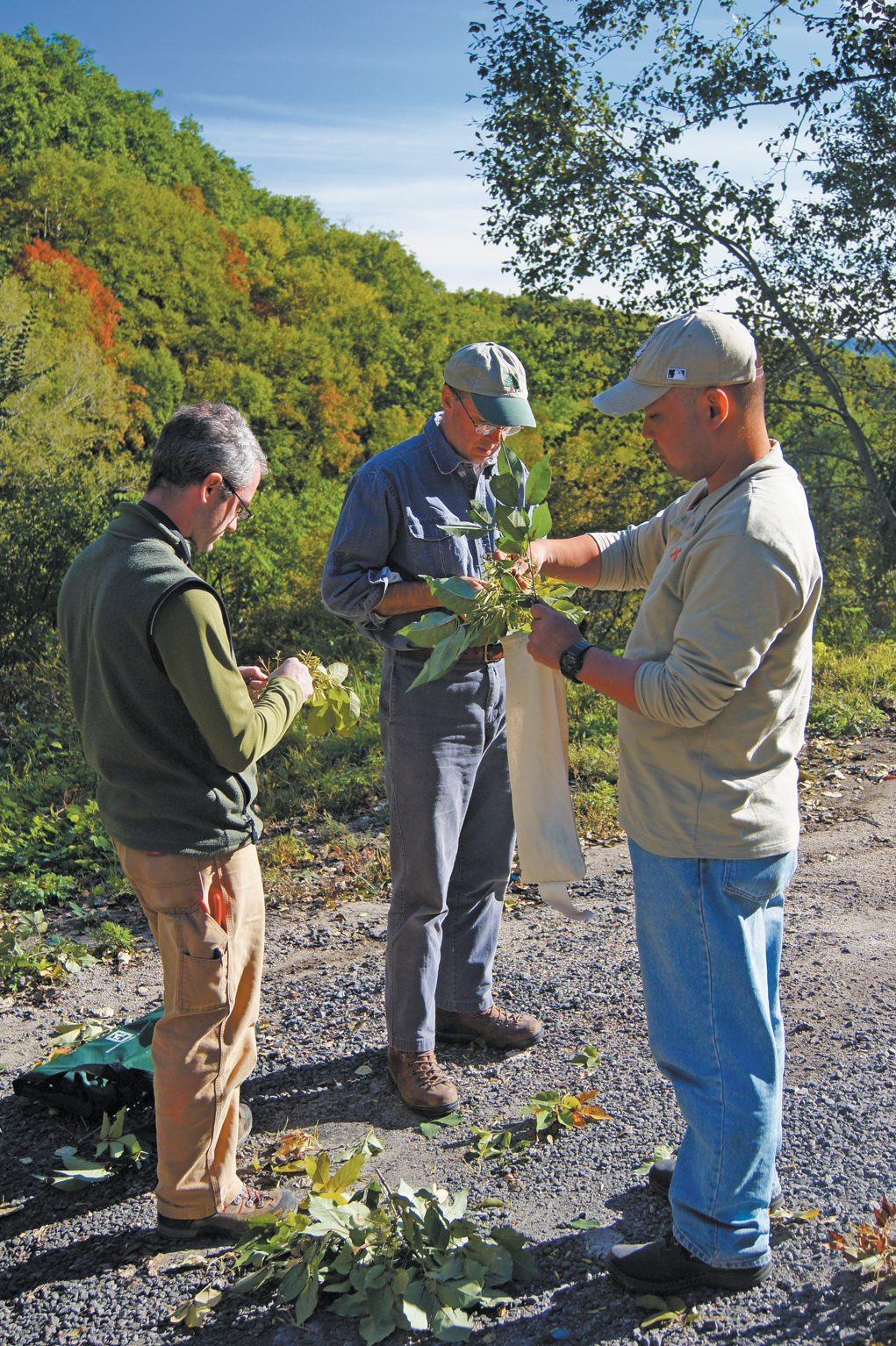
Kentucky Coffeetree
Gymnocladus dioicus

- Accession Number
- The alpha-numeric value assigned to a plant when it is added to the living collection as a way of identifying it.
- Accession Date
- The year the plant’s accession number was assigned.
- Common Name
- The non-scientific name for the plant.
- Scientific Name
- The scientific name describes the species of an organism. The first word is the plant's scientific genus and the second is the specific epithet. This two-word binomial is sometimes followed by other taxonomic descriptors, including subspecies (denoted by "ssp."), variety (denoted by "var."), form (denoted by "f." or "forma"), and cultivar (denoted by single quotation marks).
- Plant Family
- The family to which the plant belongs.
- Propagation Material
- The first part (material code) describes the material used to create the plant. The most common codes are "SD" (seed), "EX" (existing plant), "PT" (plant), "CT" (cutting), "SC" (scion), "SG" (seedling), and "GR" (graft). The second part describes the lineage the plant is derived from. The last part describes the year of propagation.
- Collection Data
- The first part indicates provenance (place or source of origin) using a letter code ("W" = wild, "G" = garden, "Z" = indirect wild, "U" = uncertain). The second part lists the plant source. For wild-collected material, the collector, collection number, and country are given.
- Location
- The location of the plant on the landscape.
UNITED STATES -
A. H. CURTISS, LIBERTY,
VIRGINIA, U.S.A.
Nearly a century and a half old, this Kentucky coffeetree was one of the first plants grown from seed at the Arnold Arboretum.
The seeds for many of the trees in the Arboretum’s landscape were collected on the other side of the world by Arboretum scientists. But for every tree grown from a seed collected on a remote mountainside in China, there is a tree grown from plant material collected much closer to home. This Kentucky coffeetree, added to the Arboretum’s collection in 1873 along with two of its siblings, is one such plant, collected by an amateur American botanist in Liberty, Virginia.
When Arboretum founding director Charles Sprague Sargent began planning for the Arboretum, he corresponded with botanists at botanic gardens and research facilities around the world to gather plants. He received plant material from the Royal Botanic Gardens at Kew in the United Kingdom, the Garden of Plants in France, and the Imperial Botanic Garden at Saint Petersburg in the Russian Empire. These contributions from large institutions played a crucial role in supplying material to form the collections.
But the bedrock foundation of the collection came from botanists and citizen scientists in North America. By 1874, just two years after the establishment of the Arboretum, Sargent was corresponding with and receiving seeds from fourteen botanists, farmers, and estate owners across the United States.
One of these was Allen Hiram Curtiss. Initially groomed for public office by his father Gaston, Allen Curtiss inherited a love of botanizing from his mother, Floretta, a lifelong enthusiast who amassed an impressive collection of dried algae specimens. Together, mother and son braved the heat and humidity of Florida’s east coast as they traveled its rivers, swamps, beaches, and keys in search of botanical specimens.
During his career, Allen Curtiss also corresponded with Asa Gray, the famed Harvard botanist, for several decades, exchanging seed, herbarium specimens, and ideas. Curtiss lived and worked in Virginia and Florida, where he collected specimens (including the tree and its siblings) and sent them to gardens around the world. Through careful and dedicated study, Curtiss established himself as a vital source of information on the flora of the Eastern Gulf Coast of the United States. Today, herbaria around the world hold specimens he provided.
Click here to read a transcript of the audio segment below.
United States
Viewing this plant in-person? Look for these defining characteristics:
About Our Collection
Fun Facts
Stats
- Living Specimens
- Specimens Dead or Removed
- First Addition
- Most Recent Addition
- Tallest Specimen



Living Specimens
| Plant ID | Accession Date | Received As | Origin | Source |
|---|---|---|---|---|










